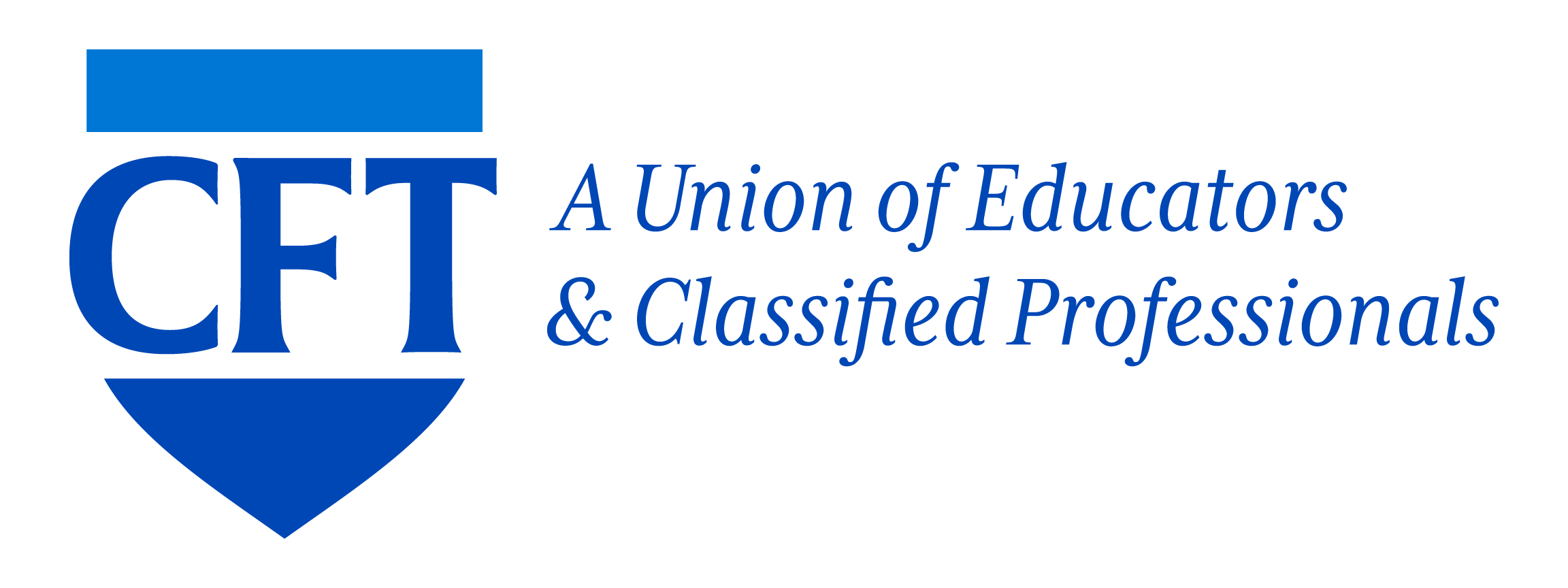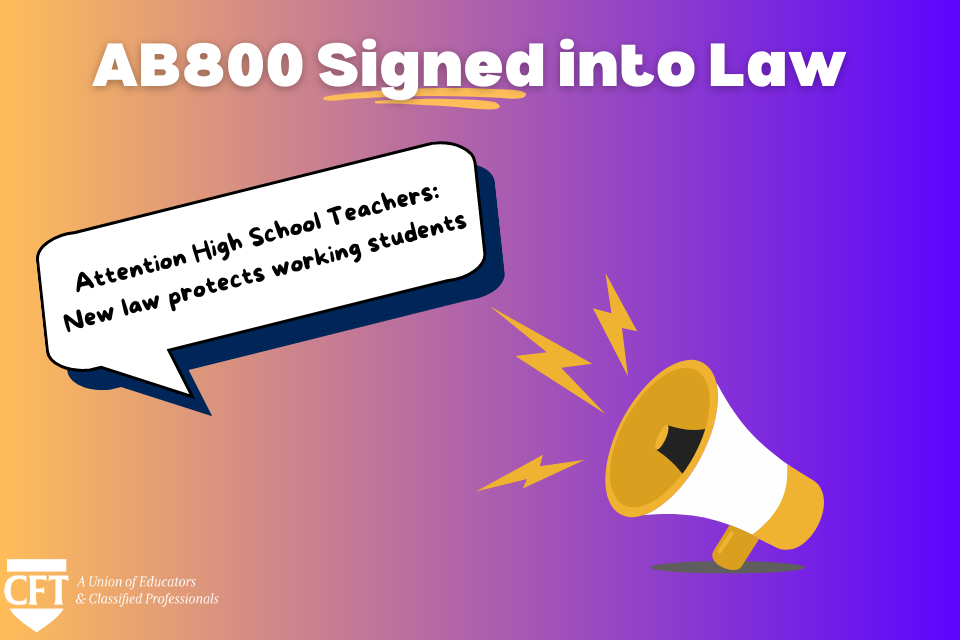Labor History Month
Attention High School Teachers: New law protects working students
AB 800 signed into law by Gavin Newsom on September 30, 2023
AB 800 (Ortega), signed into law by Gavin Newsom on September
30, 2023, is an important
breakthrough for the protection of your students on the job
against injury, wage theft and other violations of their rights.
AB 800 mandates a week of “appropriate educational exercises” for all 11th and 12th grade students in the state (public and charter) “that make pupils aware of the role that the labor movement has played in shaping California and the United States.”

